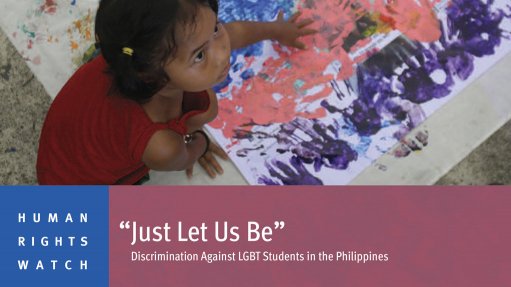
Schools should be safe places for everyone. But in the Philippines, students who are lesbian, gay, bisexual, and transgender (LGBT) too often find that their schooling experience is marred by bullying, discrimination, lack of access to LGBT-related information, and in some cases, physical or sexual assault. These abuses can cause deep and lasting harm and curtail students’ right to education, protected under Philippine and international law.
In recent years, lawmakers and school administrators in the Philippines have recognised that bullying of LGBT youth is a serious problem, and designed interventions to address it. In 2012, the Department of Education (DepEd), which oversees primary and secondary schools, enacted a Child Protection Policy designed to address bullying and discrimination in schools, including on the basis of sexual orientation and gender identity. The following year, Congress passed the Anti-Bullying Law of 2013, with implementing rules and regulations that enumerate sexual orientation and gender identity as prohibited grounds for bullying and harassment. The adoption of these policies sends a strong signal that bullying and discrimination are unacceptable and should not be tolerated in educational institutions.
But these policies, while strong on paper, have not been adequately enforced. In the absence of effective implementation and monitoring, many LGBT youth continue to experience bullying and harassment in school. The adverse treatment they experience from peers and teachers is compounded by discriminatory policies that stigmatise and disadvantage LGBT students and by the lack of information and resources about LGBT issues available in schools.
This report is based on interviews and group discussions conducted in 10 cities on the major Philippine islands of Luzon and the Visayas with 76 secondary school students or recent graduates who identified as LGBT or questioning, 22 students or recent graduates who did not identify as LGBT or questioning, and 46 parents, teachers, counsellors, administrators, service providers, and experts on education. It examines three broad areas in which LGBT students encounter problems—bullying and harassment, discrimination on the basis of sexual orientation and gender identity, and a lack of information and resources—and recommends steps that lawmakers, DepEd, and school administrators should take to uphold LGBT students’ right to a safe and affirming educational environment.
Report by the Human Rights Watch